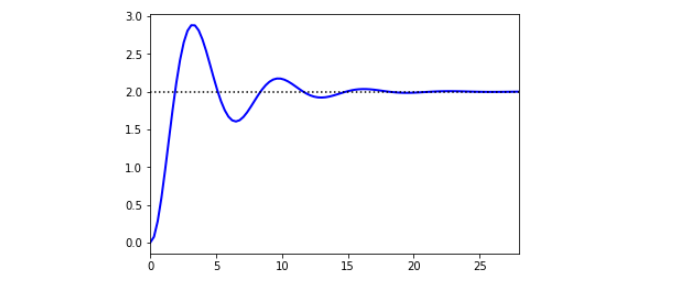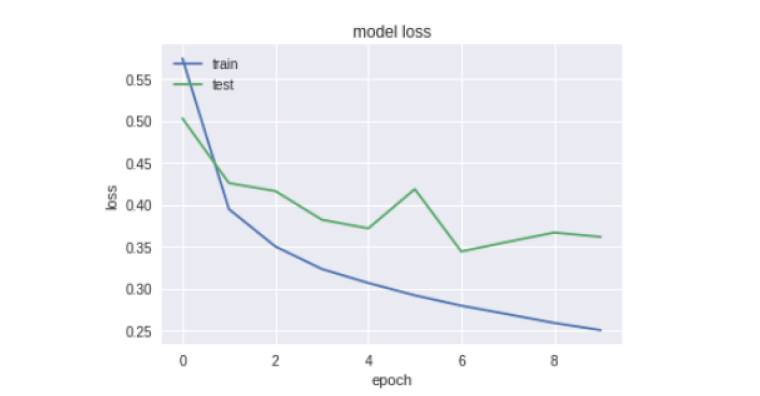Google Colaboratoryを使ってみる

◆特徴
・Python、JupyterNotebookをブラウザ上で使える(PCの環境構築不要)。
・Tensorflow、Numpy、Matplotlib、Pandas、Keras、Chainer等が予め用意されている。
・GPU環境
その1. lena画像を表示する
・下記実行で画像をアップロードするためのアイコンが出てくる。
# 画像アップロード from google.colab import files uploaded = files.upload()

・アップされたようなので、これ↓で表示(^^
# 表示 from IPython.display import Image,display_jpeg display_jpeg(Image('lena.jpg'))

その2. TensorFlowのtutrial(mnist)少しさわる
・手書き文字データのダウンロード→ ランダムに10個とって表示
import numpy as np import matplotlib.pyplot as plt from tensorflow.examples.tutorials.mnist import input_data # mnistデータをダウンロード mnist = input_data.read_data_sets("/tmp/data/", one_hot=True) # 取出し 表示 images, labels = mnist.train.next_batch(10) fig = plt.figure(figsize=(8,4)) for c, (image, label) in enumerate(zip(images, labels)): subplot = fig.add_subplot(2,5,c+1) subplot.set_xticks([]) subplot.set_yticks([]) subplot.set_title('%d' % np.argmax(label)) subplot.imshow(image.reshape((28,28)), vmin=0,vmax=1, cmap=plt.cm.gray_r, interpolation="nearest") plt.show()

その3. OpenCVも使えるみたい
・画像の顔認識モジュールを使う
Qiita記事をみながら…
Colaboratory上でOpenCVを使って顔認識をしてみる
・OpenCV公式GitHubのカスケード分類器(haarcascade_frontalface_default.xml)をダウンロード → 上記同様のfiles.upload()でColaboratory上にファイルをアップロードする。その後下記実行。
import io import numpy as np import requests import cv2 from matplotlib import pyplot as plt # Web上の画像を読込み res = requests.get('http://cinema.usc.edu/userfiles/A0127948311B99D1C02CF7783648D35EBD92E9B2images/Goonies2(1).jpg') bin_data = io.BytesIO(res.content) file_bytes = np.asarray(bytearray(bin_data.read()), dtype=np.uint8) img = cv2.imdecode(file_bytes, cv2.IMREAD_COLOR) # matplotで表示するためにBGR->RGBフォーマットに変換 img = cv2.cvtColor(img, cv2.COLOR_BGR2RGB) # アップロードした分類器ファイルを使用 cascade = cv2.CascadeClassifier('./haarcascade_frontalface_default.xml') # 検出 gray = cv2.cvtColor(img, cv2.COLOR_BGR2GRAY) face = cascade.detectMultiScale(gray, scaleFactor=1.1, minNeighbors=3, minSize=(30, 30)) # 検出した領域を矩形で囲む for (x, y, w, h) in face: cv2.rectangle(img, (x, y), (x + w, y + h), (200,0,0), 3) # xy軸ラベル非表示 plt.grid(False) plt.tick_params(labelbottom=False, labelleft=False, labelright=False, labeltop=False) plt.imshow(img)

その4. Chainerも使える??
・Coraboratory上で次のようなインストールが必要とのこと
!apt-get install -y -qq libcusparse8.0 libnvrtc8.0 libnvtoolsext1 !ln -snf /usr/lib/x86_64-linux-gnu/libnvrtc-builtins.so.8.0 /usr/lib/x86_64-linux-gnu/libnvrtc-builtins.so !pip install cupy-cuda80==4.0.0b4 !pip install chainer==4.0.0b4

その5. データのプロットの近似直線の表示
import numpy as np import pandas as pd import matplotlib.pyplot as plt # numpyを使ってデータ生成 x = np.linspace(0,1,30) y = np.random.rand(30) # フィッティング直線 a, b = np.polyfit(x, y, 1) y2 = a * x + b # 表示関連 fig=plt.figure() ax=fig.add_subplot(111) ax.scatter(x,y,alpha=0.5,color="Purple",linewidths="1") ax.plot(x, y2,color='Blue') ax.text(0.1,a*0.1+b, 'y='+ str(round(a,4)) +'x+'+str(round(b,4))) plt.show()
・Colaboratory上のグラフ表示

その6-1. Pythonを使って制御(一次遅れ系)のプロット描画
from sympy import * from pylab import * # 一次遅れ系 伝達関数 G(s)=K/(T*s+1), (T>0, K>0) K,T = symbols('K T', positive=True) s,t = symbols('s t') G = Lambda((s, K, T), K/(T*s+1)) # ステップ応答信号 u(t)=1 ラプラス変換 U = Lambda(s, laplace_transform(1, t, s)[0]) # U(s)=1/s # 一次遅れ系の単位ステップ応答 y(t) はY(s)=G(s)*U(s)=K/(s*(T*s+1)) の逆ラプラス変換 ilt = inverse_laplace_transform y = Lambda((t, K, T), ilt(G(s,K,T)*U(s), s, t)) # K=1, T=5 の場合をプロット trange = arange(0, 45, 0.1) plot(trange, [y(t,1,5) for t in trange]) plt.axhline(1, color="gray", linestyle="--") show()
・表示結果

その6-2. 二次遅れ系のプロット描画
・とりあえず写経
import numpy as np import matplotlib.pyplot as plt from scipy import signal from scipy.integrate import odeint %matplotlib inline # tau * dy2/dt2 + 2*zeta*tau*dy/dt + y = Kp*u Kp = 2.0 # gain tau = 1.0 # time constant zeta = 0.25 # damping factor theta = 0.0 # no time delay du = 1.0 # change in u # Transfer Function num = [Kp] den = [tau**2,2*zeta*tau,1] sys1 = signal.TransferFunction(num,den) t1,y1 = signal.step(sys1) plt.figure(1) plt.plot(t1,y1*du,'b-',linewidth=2,label='Transfer Fcn') y_ss = Kp * du plt.plot([0,max(t1)],[y_ss,y_ss],'k:') plt.xlim([0,max(t1)]) plt.show()
・表示結果

・参考:
https://apmonitor.com/pdc/index.php/Main/ModelSimulation
その7. Fashionmnist+KerasのNN
・ファッションmnistを使った簡単なニューラルネットワークの学習
# 参考: http://uchidama.hatenablog.com/entry/2018/01/18/064500 # import libraries import keras import matplotlib.pyplot as plt import numpy as np import random from matplotlib import cm %matplotlib inline # import modules# impor from __future__ import print_function from keras.datasets import fashion_mnist # the data, shuffled and split between train and test sets (x_train, y_train), (x_test, y_test) = fashion_mnist.load_data() print('x_train shape:', x_train.shape) print(x_train.shape[0], 'train samples') print(x_test.shape[0], 'test samples') print('x_train shape:',x_train.shape) print('y_train shape:',y_train.shape) print('x_test shape:',x_test.shape) print('y_test shape:',y_test.shape) print(type(x_test)) print(type(y_test[0])) # show sample data、見てみる fig = plt.figure(figsize=(9,9)) for i in range(25): ax = fig.add_subplot(5, 5, i+1, xticks=[], yticks=[]) ax.imshow(x_train[i], cmap='gist_gray') # 前処理 # reshape 28*28 pixel data into 784 dim data # convert into float type and normalize pixel data from 0.0 to 1.0 x_train = x_train.reshape(60000, 784).astype('float32') /255 x_test = x_test.reshape(10000, 784).astype('float32') /255 # encode label data into "one-hot" y_train = keras.utils.np_utils.to_categorical(y_train.astype('int32'),10) y_test = keras.utils.np_utils.to_categorical(y_test.astype('int32'),10) # モデルの層構造 # 2層のニューラルネットワーク、ドロップアウト無し # 一般的なmnistの分類器ででf_mnistも分類できる # Sequential Model# Sequen from keras.models import Sequential from keras.layers import Dense, Dropout, Activation from keras.optimizers import RMSprop # neural network structure model = Sequential() # 1st layer model.add(Dense(100, activation='relu', input_shape=(784,))) # 2st layer model.add(Dense(100, activation='relu')) # 3st layer model.add(Dense(10, activation='softmax')) # 学習 # Set definitions for traning model.compile(loss='categorical_crossentropy', optimizer=RMSprop(), metrics=['accuracy']) # Excute training for 10(epochs) times history = model.fit(x_train, y_train, batch_size=128, epochs=10, verbose=1, validation_data=(x_test, y_test)) # 結果表示 # plot the resulut plt.plot(history.history['acc']) plt.plot(history.history['val_acc']) plt.title('model accuracy') plt.ylabel('accuracy') plt.xlabel('epoch') plt.legend(['train', 'test'], loc='upper left') plt.show() # plot the loss plt.plot(history.history['loss']) plt.plot(history.history['val_loss']) plt.title('model loss') plt.ylabel('loss') plt.xlabel('epoch') plt.legend(['train', 'test'], loc='upper left') plt.show()


[google colaboratory、コラボレイトリー、Jupyter Notebook、Tensorflow、チュートリアル、画像表示、ファイルアップロード、ダウンロード、mnist]
2018-5-16